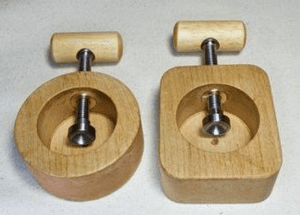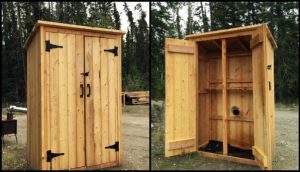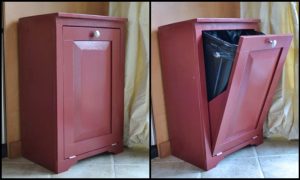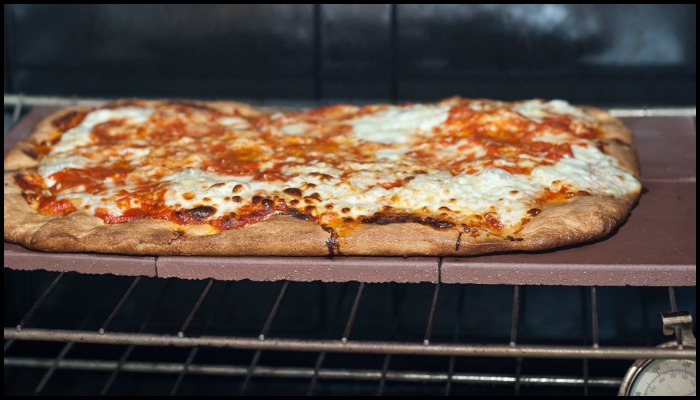
Pizza has already become a staple in our lives. Whether we’re grabbing a slice on the go or sitting down to a full pizza pie, this classic dish is always a welcome sight. But have you ever stopped to think about making your own pizza in your kitchen?
With a little effort, you can easily make a delicious pizza at home that rivals anything you could get from a pizzeria. And, you can customize it however you like, using your favourite toppings and ingredients.
So, next time you’re in the mood for pizza, why not try making your own? It’s easier than you might think, and you’ll end up with a delicious, homemade meal that you can be proud of.
You can enjoy as much authentic pizza as you want if you bake it yourself at home. But when your pizza stone cracks, well, you would have to shell out around $40 for a replacement. Well, not anymore! You can still enjoy great pizza by baking it, not on a pizza stone, but on quarry tiles instead!
Quarry tiles are an excellent and affordable alternative to more expensive pizza stones. Quarry tiles can be found at most building supply stores for just a few dollars each. When used as a pizza stone, quarry tiles provide excellent heat retention and distribution, resulting in a perfectly cooked pizza. You can buy them as your pizza stone alternative for a total of just around $3!
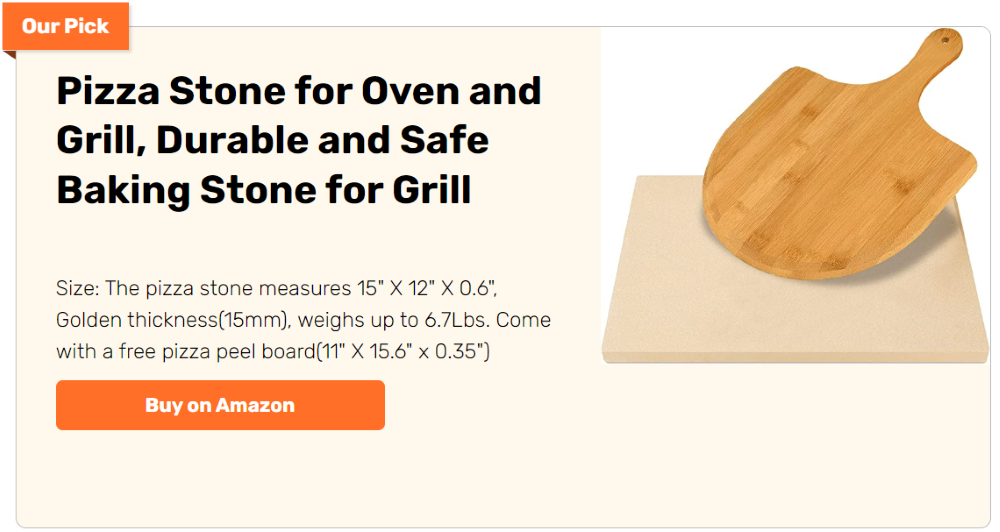
Of course, quarry tiles will eventually crack after using them a number of times. But what’s great about them, as opposed to the standard pizza stones, is that when they crack you don’t lose the entire ‘pizza stone’. It’s easier and definitely a lot cheaper since you’ll only be replacing a part of the pizza stone.
Contents
Choosing the Right Tiles for Your Pizza Stone
Making pizza at home can be a rewarding experience. One essential tool is the pizza stone. The stone can give you a perfectly crisp crust. If you’re considering an affordable alternative to commercial pizza stones, using unglazed tiles is a savvy choice.
In this section, we’ll guide you through purchasing the best tiles to use as your pizza stone.
Types of Tiles Suitable as a Pizza Stone
When selecting tiles to use as a pizza stone, it’s essential to understand that not all tiles are suitable for high-temperature baking. Unglazed quarry tiles are widely recommended because they excel in several key areas. Firstly, these tiles can endure the high temperatures necessary for pizza baking, which can reach upwards of 500 degrees Fahrenheit. Their ability to withstand such heat without cracking is crucial for consistent use.
Moreover, unglazed quarry tiles are excellent at heat distribution. This ensures that your pizza cooks evenly, preventing hot spots that can cause parts of the dough to burn before other areas are properly cooked. The even heat distribution is similar to what is achieved with more expensive commercial pizza stones.
Thickness is another important factor. Tiles that are too thin may crack or warp over time due to the intense heat of the oven. Typically, a thickness of about 1/2 inch is ideal as it provides sufficient mass for heat retention, ensuring your oven’s heat is efficiently absorbed and then steadily released, giving your pizza a perfectly crispy crust.
Where to Buy Quarry Tiles
Finding the right quarry tiles for your homemade pizza stone is relatively straightforward. Most hardware stores and building supply outlets stock quarry tiles. However, when purchasing these tiles, it’s important to ensure they are specifically unglazed. The absence of glaze is crucial not only for safety reasons—glazed tiles can sometimes contain lead or other harmful substances—but also for performance, as unglazed tiles provide better heat absorption.
It’s also essential to confirm that the tiles are safe for food contact. While shopping, you might notice that not all unglazed quarry tiles are marketed directly for cooking purposes. It’s advisable to ask for product specifications or check if the tiles have any certification regarding their composition and safety.
Home improvement stores typically offer a variety of tile sizes, which allows you to select dimensions that will fit perfectly inside your oven. Arranging the tiles on your oven rack will enable you to create a custom-sized pizza stone that maximizes your baking surface. This flexibility is particularly beneficial for those with smaller or larger than average ovens.
By ensuring that you choose the correct type of unglazed quarry tiles and purchase them from reputable suppliers, you can create a high-quality pizza stone that rivals those found in professional kitchens. This setup will allow you to achieve restaurant-quality pizzas from the comfort of your home.
Safety Considerations
Before using tiles as your pizza stone, it’s critical to ensure they are food-safe. Some ceramic tiles may contain traces of lead or other harmful chemicals, especially in the glaze. Since you are looking for unglazed tiles, the risk is lower, but it’s always safe to ask for material specifics or look for labels indicating they are lead-free and non-toxic.
By following these guidelines, you can effectively select and prepare tiles that will serve as an excellent pizza stone, helping you create delicious, pizzeria-quality pizzas right from your home kitchen.
Click on any image to start the lightbox display. Use your Esc key to close the lightbox.![]()
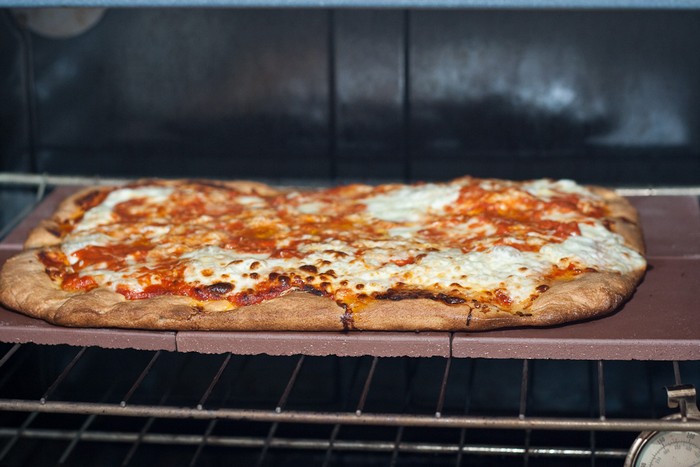
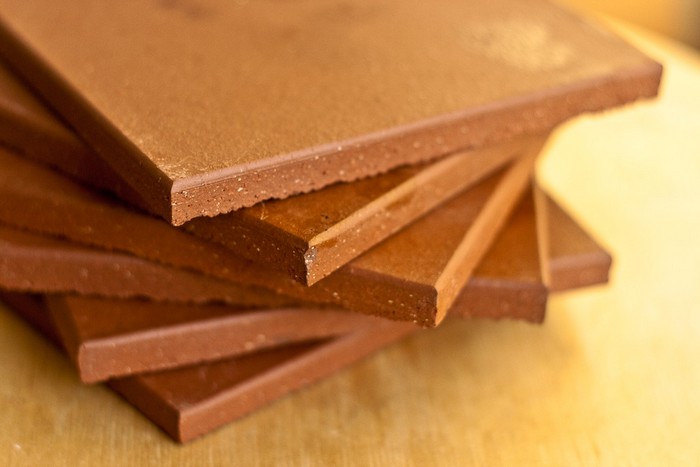
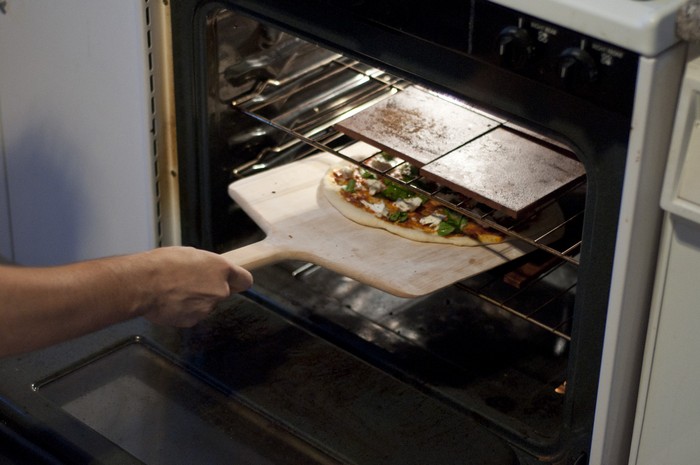
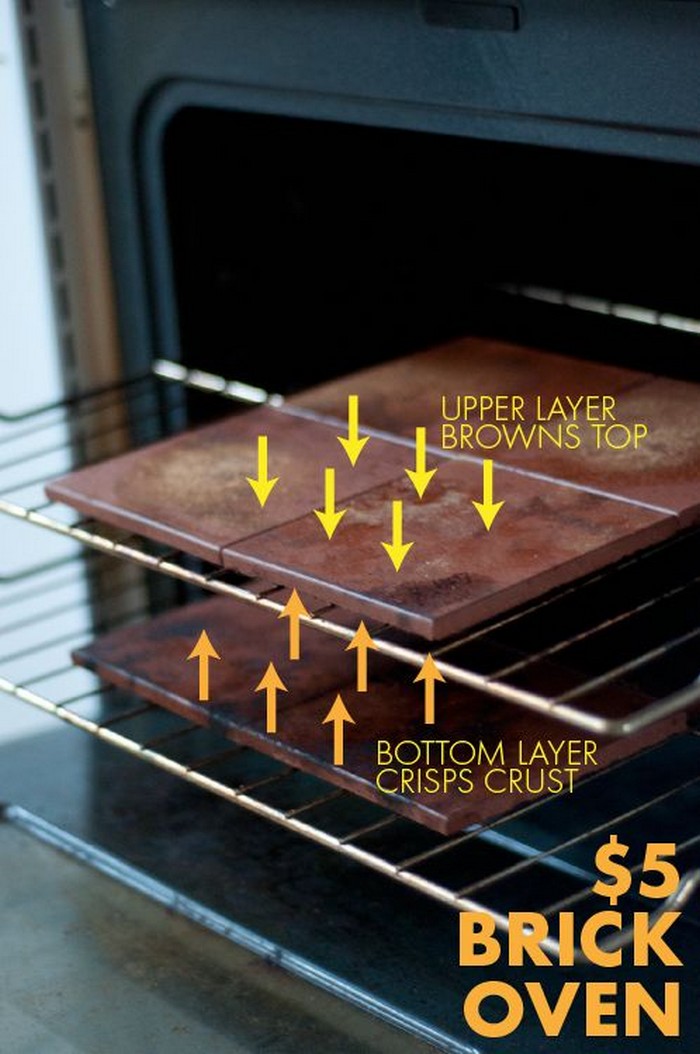
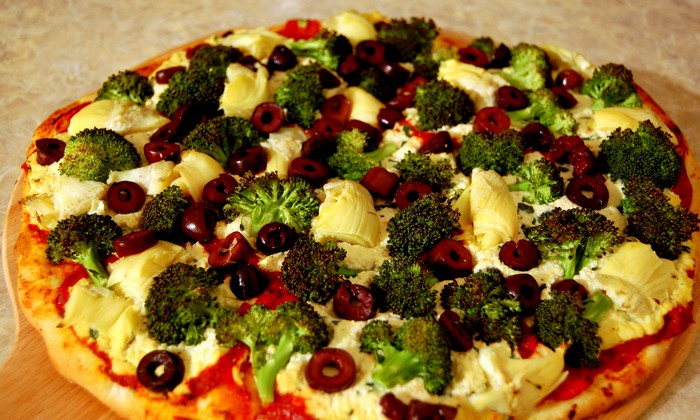
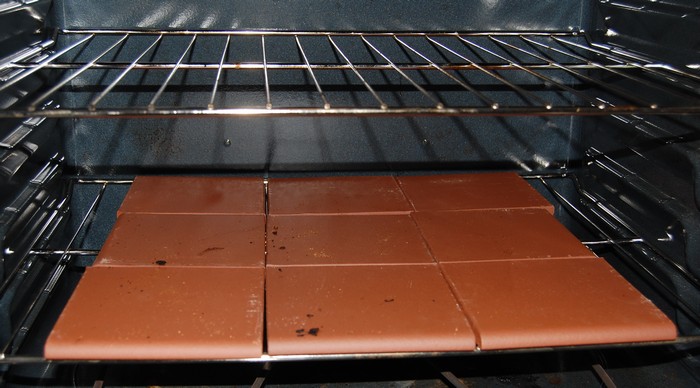
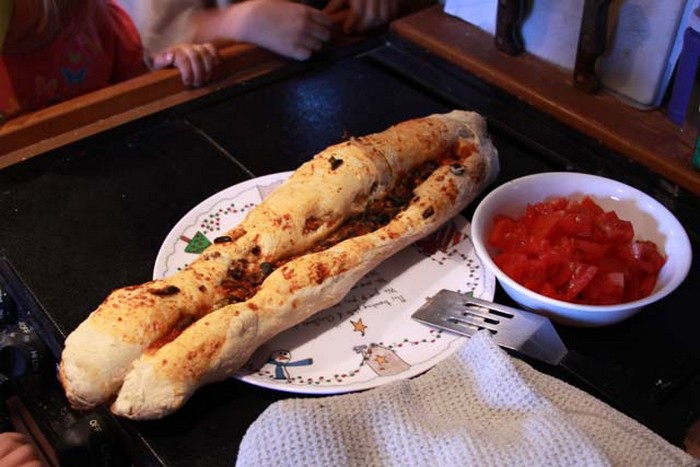
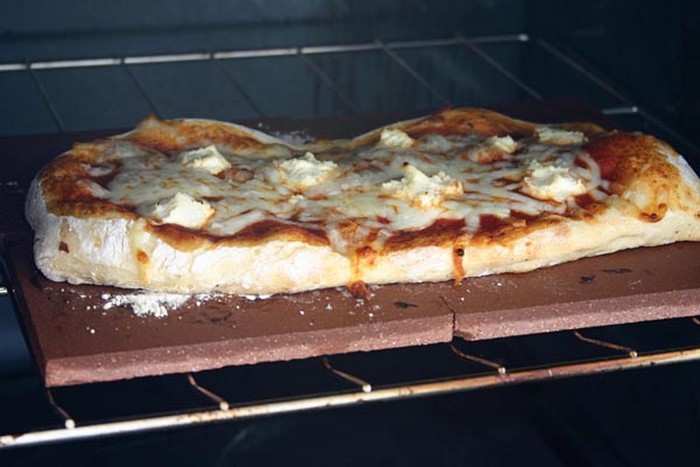
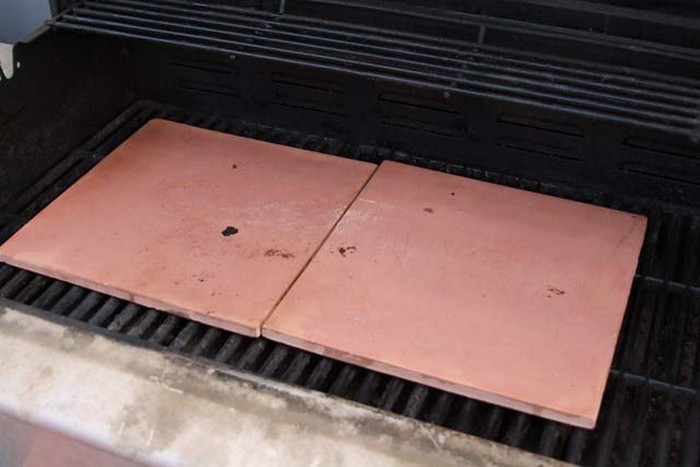
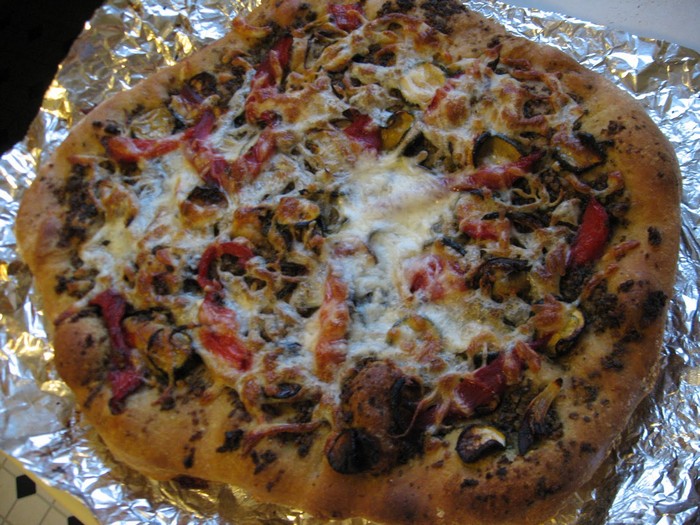
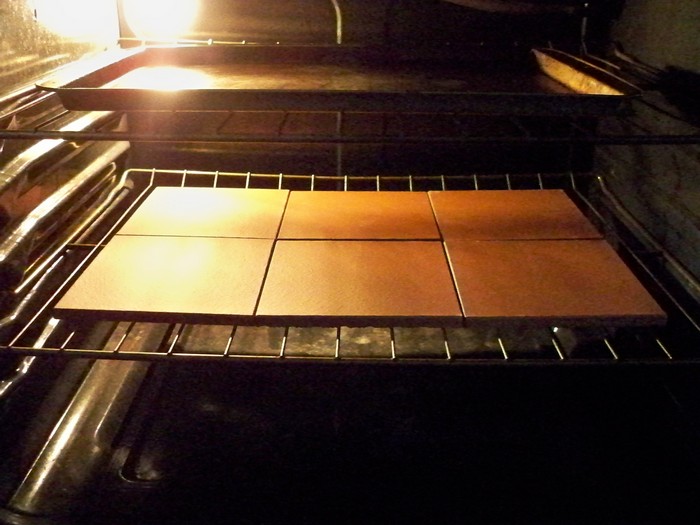
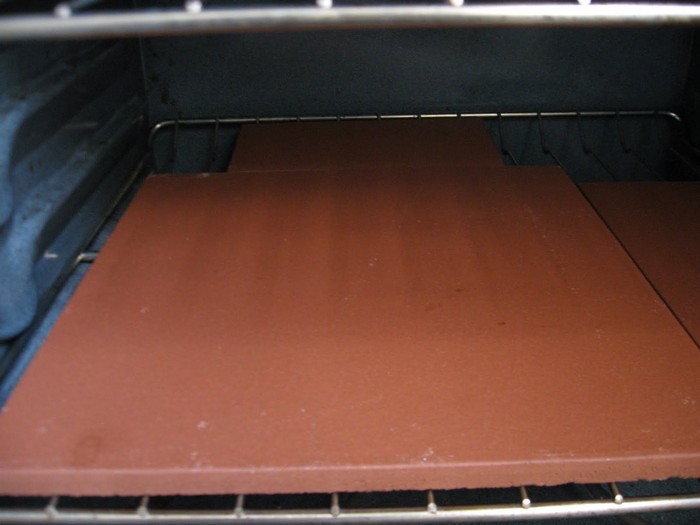
You can get step-by-step instructions from The Paupered Chef over here…
Advanced Pizza Baking Techniques with Quarry Tiles
Mastering the art of pizza baking at home is not just about having the right ingredients; it’s also about how you use your oven and tools. Quarry tiles, a favorite among DIY baking enthusiasts, can elevate your homemade pizzas to professional standards if used with the right techniques.
Here, we explore some advanced methods that can help you perfect your pizza baking using quarry tiles.
Two-Tier Tile Setup for Optimal Heat
One effective method to mimic the intense heat of a commercial pizza oven is to use a two-tier setup of quarry tiles. Place one layer of tiles directly on the oven rack in the middle position, and another layer on the bottom rack. This setup helps in creating a more enclosed baking environment, similar to a brick pizza oven, which radiates heat evenly from all sides. The tiles on the bottom rack store and radiate heat upwards, ensuring the base of your pizza cooks perfectly, while the upper tiles help in browning the crust and melting the cheese evenly.
Preheating Your Tiles
For the best results, thoroughly preheat your quarry tiles before baking. Place the tiles in a cold oven, and then set the oven to the highest temperature, usually between 500-550 degrees Fahrenheit. Allow the tiles to heat for at least 30 to 45 minutes. This lengthy preheating period ensures that the tiles are saturated with heat, which is key to achieving a crisp crust that is characteristic of the best pizzas.
Broiler-Assisted Finishing
To give your pizza that desirable charred and blistered texture, use your oven’s broiler. After your pizza has cooked through and the crust is nearly perfect, turn on the broiler for the last minute or two of baking. Keep a close eye on the pizza as it can char quickly. This technique helps in achieving a beautifully browned top and a crispy texture that rivals wood-fired pizzas.
Using Steam for a Crispier Crust
Introducing a bit of steam during the baking process can also enhance the texture of your pizza crust. You can achieve this by placing a metal baking pan filled with water on the bottom rack beneath the tiles. As the water evaporates, it creates a humid environment, which helps in making the crust crispy and the interior of the dough light and airy.
Rotating for Even Cooking
Due to varying hot spots in domestic ovens, rotating your pizza halfway through the cooking time is crucial for even baking. This ensures that all parts of the pizza receive equal exposure to the hottest parts of the tile, leading to a uniformly cooked base and evenly melted toppings.
By incorporating these advanced techniques with quarry tiles, you can transform your home oven into a powerhouse for pizza baking. Experiment with these methods to find what works best for your setup and preferences, and you’ll be on your way to crafting pizzeria-quality pizzas right at home.
Caring for Your Unglazed Quarry Tile Pizza Stone
Using unglazed quarry tiles as a makeshift pizza stone can elevate your homemade pizza to professional levels. Properly seasoning and maintaining these tiles can ensure they perform well and last long.
Seasoning Your Quarry Tiles
First up, seasoning your tiles is essential to make them more non-stick and to prevent your pizza dough from clinging to the surface. Start by rinsing your tiles under water to wash away any residual dust. It’s important to avoid soap, as it could seep into the tile and later impact the taste of your pizza.
For the seasoning process, place your clean tiles in the oven. Set your oven to around 200 degrees Fahrenheit,and bake the tiles for an hour. This slow heat helps to draw out all the moisture from the tiles. Once done, turn off the oven and let the tiles cool down completely inside. This one-time process will prep your tiles for their first bake.
Maintaining Your Tile Pizza Stone
Looking after your tiles is easy but does need regular attention to keep them in tip-top shape. Always let the tiles cool completely in the oven after you’ve finished baking. If there’s any food residue stuck on them, gently scrape it off with a plastic scraper; metal tools might scratch the surface.
For a quick clean, just wipe the tiles with a slightly damp cloth. If you run into tougher stains, a sprinkle of baking soda can help lift them without the need for harsh chemicals. After cleaning, ensure the tiles are fully dry before you put them away or use them again.
It’s crucial to avoid rapid temperature changes with your tiles. Always put them into a cold oven and let them heat up gradually with the oven to prevent cracking. Cooling should be handled the same way; let them wind down with the oven off.
With these easy steps, your DIY pizza stone will be ready for many baking adventures. Not only will proper care keep your tiles in great shape, but it will also ensure they continue to produce delicious, crispy pizzas for you to enjoy.
Conclusion
Using unglazed quarry tiles as a pizza stone offers an affordable and effective way to achieve a crispy pizza crust at home. These tiles distribute heat evenly, ensuring your pizza cooks perfectly each time. With proper care and maintenance, these DIY pizza stones can provide excellent baking results for years to come.
Your DIY pizza stone goes well with you own propane tank pizza oven. Check out our guide on how to build one!


